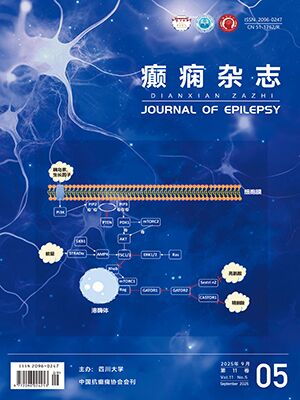| 1. |
Bruns Jr, Hauser WA. The epidemiology of traumatic brain injury:a review. Epilepsia, 2003, 44(10):2-10.
|
| 2. |
Kuppermann N. Pediatric head trauma:the evidence regarding indications for emergent neuroimaging. Pediatr Radiol, 2008, 38(4):S670-674.
|
| 3. |
Wu X, Hu J. Epidemiology of traumatic brain injury in eastern China, 2004:a prospective large case study. J Trauma, 2008, 64(5):1313-1319.
|
| 4. |
Annegers JF, Grabow JD, Baren JM, et al. The incidence, causes, and secular trends of head trauma in Olmsted County, Minnesota, 1935-1974. Neurology, 1980, 30(9):912-919.
|
| 5. |
Durkin M S, Olsen S, Panacek EA, et al. The epidemiology of urban pediatric neurological trauma:evaluation of, and implications for, injury prevention programs. Neurosurgery, 1998, 42(2):300-310.
|
| 6. |
Shao J, Zhu H, Huff KR, et al. Characteristics and trends of pediatric traumatic brain injuries treated at a large pediatric medical center in China, 2002-2011. PLoS One, 2012, 7(12):e51634.
|
| 7. |
Kolakowsky-Hayner SA, Wright J, McBride DQ, et al. Impact of late post-traumatic seizures on physical health and functioning for individuals with brain injury within the community. Brain Inj, 2013, 27(5):578-586.
|
| 8. |
Mazzini L, Cossa F M, Inkelis SH, et al. Posttraumatic epilepsy:neuroradiologic and neuropsychological assessment of long-term outcome. Epilepsia, 2003, 44(4):569-574.
|
| 9. |
全国神经外科癫痫防治协助组.神经外科围手术期和外伤后癫痫的预防及治疗指南(草案).中华神经医学杂志, 2006, 12(5):1189-1190.
|
| 10. |
Lowenstein DH. Epilepsy after head injury:an overview. Epilepsia, 2009, 50(2):4-9.
|
| 11. |
Annegers JF, Hauser WA, Coan SP, et al. A population-based study of seizures after traumatic brain injuries. N Engl J Med, 1998, 338(1):20-24.
|
| 12. |
Ates O, Ondul S, Rocca WA, et al. Post-traumatic early epilepsy in pediatric age group with emphasis on influential factors. Childs Nerv Syst, 2006, 22(3):279-284.
|
| 13. |
Ferguson PL, Smith GM, Wannamaker BB, et al. A population-based study of risk of epilepsy after hospitalization for traumatic brain injury. Epilepsia, 2010, 51(5):891-898.
|
| 14. |
Arango JI, Deibert CP, Thurman DJ, et al. Posttraumatic seizures in children with severe traumatic brain injury. Childs Nerv Syst, 2012, 28(11):1925-1929.
|
| 15. |
Asikainen I, Kaste M, Sarna S. Early and late posttraumatic seizures in traumatic brain injury rehabilitation patients:brain injury factors causing late seizures and influence of seizures on long-term outcome. Epilepsia, 1999, 40(5):584-589.
|
| 16. |
Moshe SL. Epileptogenesis and the immature brain. Epilepsia, 1987, 28(1):S3-15.
|
| 17. |
王学玲.创伤后癫痫的研究进展.中华神经外科杂志, 2010, 10(26):958-960.
|
| 18. |
Willmore LJ, Ueda Y. Posttraumatic epilepsy:hemorrhage, free radicals and the molecular regulation of glutamate. Neurochem Res, 2009, 34(4):688-697.
|
| 19. |
Wilson DA, Selassie AW. Risk of severe and repetitive traumatic brain injury in persons with epilepsy:A population-based case-control study. Epilepsy Behav, 2014, 32(3):42-48.
|
| 20. |
Emanuelson I, Uvebrant P. Occurrence of epilepsy during the first 10 years after traumatic brain injury acquired in childhood up to the age of 18 years in the south western Swedish population-based series. Brain Inj, 2009, 23(7):612-616.
|
| 21. |
Wang H, Xin T, Palchak MJ, et al. Post-traumatic seizures——a prospective, multicenter, large case study after head injury in China. Epilepsy Res, 2013, 107(3):272-278.
|
| 22. |
李雪峰.外伤后癫痫发病机制的研究进展.中华神经医学杂志, 2007, 11(6):372-377.
|
| 23. |
Young KD, Okada PJ, Sokolove PE, et al. A randomized, double-blinded, placebo-controlled trial of phenytoin for the prevention of early posttraumatic seizures in children with moderate to severe blunt head injury. Ann Emerg Med, 2004, 43(4):435-446.
|
| 24. |
Young B, Rapp RP, Norton JA, et al. Failure of prophylactically administered phenytoin to prevent late posttraumatic seizures. J Neurosurg, 1983, 58(2):236-241.
|
| 25. |
Temkin N R. Preventing and treating posttraumatic seizures:the human experience. Epilepsia, 2009, 50(2):10-13.
|
| 26. |
江基尧, 张浚.抗癫痫药预防外伤性癫痫的多中心临床研究.中华神经外科疾病研究杂志, 2004, 3(4):301-303.
|
| 27. |
Ikonomidou C, Turski L. Antiepileptic drugs and brain development. Epilepsy Res, 2010, 88(1):11-22.
|
| 28. |
陈谦学, 吴立权.外伤性癫痫治疗的临床探讨.中国临床神经外科杂志, 2007, 11(8):452-455.
|




